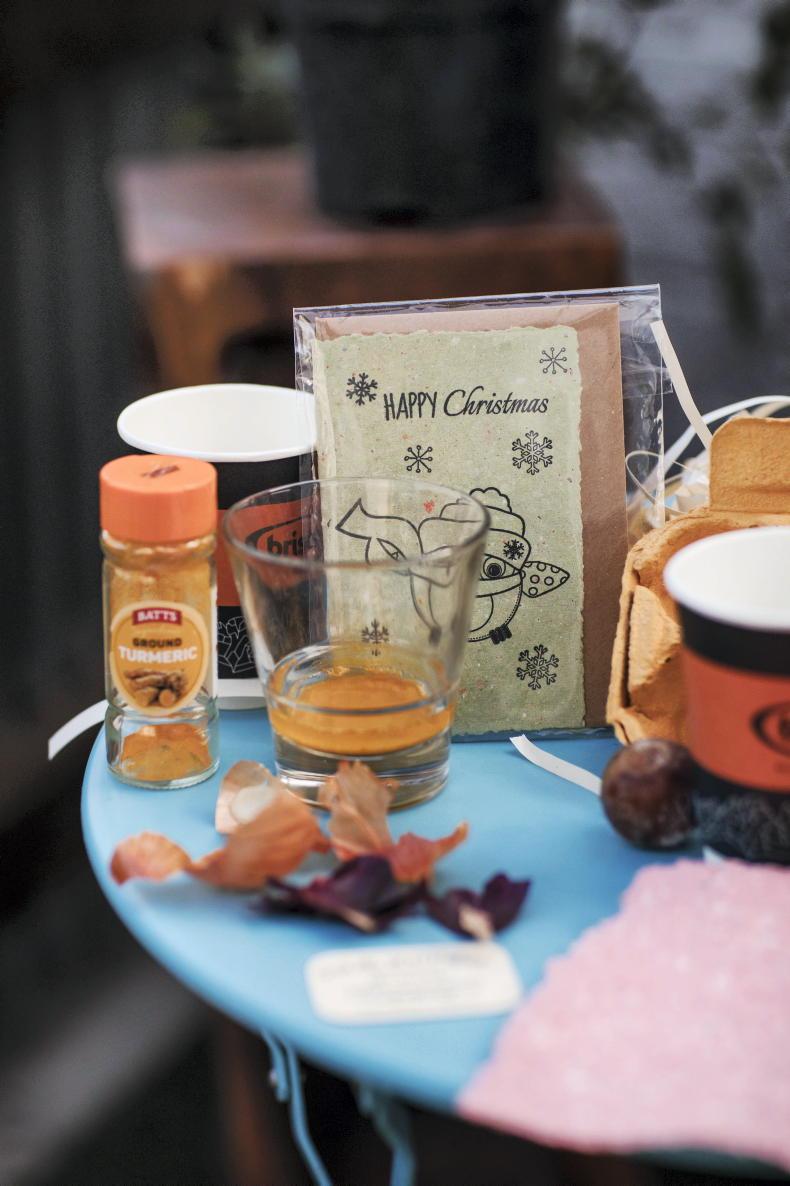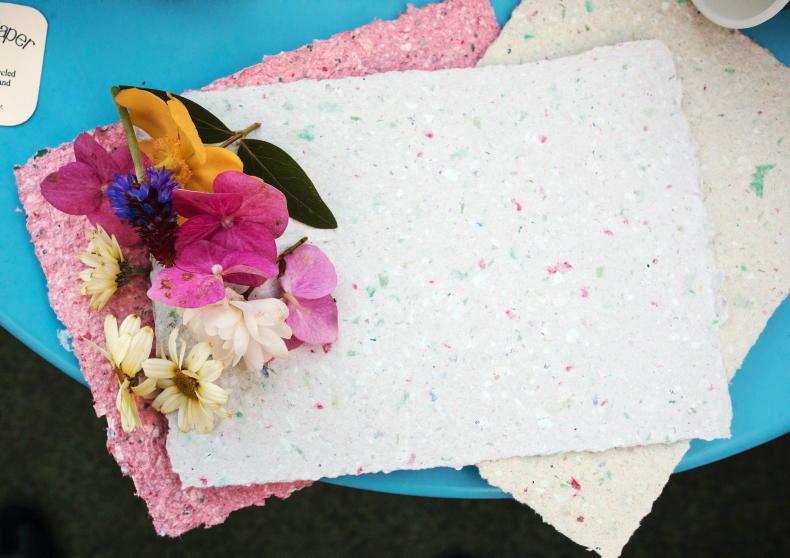When you consider terms like the “circular economy” or “bioeconomy”, they can seem a bit clinical and removed from everyday life. When I think of them, I envisage large, factory-style systems which take a waste product and magically (or scientifically, if you’re so inclined) turn it into something useful – like using anaerobic digestion to create energy.
While these types of larger-scale developments are a significant element, it’s important to remember that getting involved in the circular or bioeconomy – which in turn will help us to reach our climate goals – can be a much simpler process.
Shirley Mcloughney lives in Portroe, Co Tipperary and owns a small business called Petals and Paper. Always artistically inclined, she admits that she wasn’t aware of Ireland’s circular economy when she first started selling handmade greeting cards in 2017. After a few years, however, she was becoming increasingly aware of the paper waste her business was generating.
“I was just making regular greeting cards at that stage, and I was doing quite well, but my bins were overflowing every week,” she tells Irish Country Living. “I just thought: ‘I can’t keep doing this.’”

Waste not, want not
In 2021, she mentioned her problem with paper waste to her daughter, Robyn, who told her mother that hand-crafted paper, made from recycled paper waste, was becoming popular within the art world. She suggested that Shirley should start using the waste to make new paper.
“At first I thought, ‘no way – I couldn’t do that,’ but, little by little, I started watching paper-making tutorials on YouTube and became more interested in the idea,” she says. “Then, one night, I gave it a go — with just YouTube [for guidance] and a basin of water. The minute I put my hands in the water, I knew this was something for me.”
Soon enough, her own scrap paper wasn’t enough to keep Shirley going. She started looking into other sources of paper waste within her community, around Lough Derg and Nenagh. This was during the pandemic, when outdoor coffee kiosks gained in popularity. She noticed the huge amounts of coffee cups in bins and wondered if she could use those to make paper.

“I linked up with a coffee kiosk in Newtown – The Village Barista – and started using their wasted cups,” Shirley says. “A lot of paper coffee cups have a plastic rim – I discovered I have to put them in boiling water to remove the rims. That said, a lot of places have started to use compostable cups which can just go into the shredder.”
Shirley also began experimenting using dried flower art with her recycled paper creations – she got the idea when she opened up an old book and discovered pressed flowers she had placed in it 20 years prior. Combining dried, locally sourced flowers with her recycled paper has been a huge hit with her customer base.
“Some might ask: since a lot of the cups I use aren’t compostable or biodegradable, how could I justify using them? But this is all part of the circular economy – turning them into something that’s not going to be dumped,” she says.
Shirley now collects coffee cups from several different locations and has also started working with agricultural paper waste (like paper feed bags). She says the farming community has not just been supportive of her business – they have been fascinated by what she has been able to do with these products. She has taken a stand at Teagasc’s Energy & Farm Diversification Show (at Gurteen Agricultural College) for the past two years.

“I didn’t know anything about the circular economy until I started doing this,” says Shirley. “When I set up my stand and when the farmers see the feed bags in their raw state, and then how I shred it, make it into mulch and turn it into paper, they’re fascinated – especially the farmers, since it’s mostly feed bags and coffee cups I’m using at the minute.”
Tidy towns
While discussions around the proposed “latte levy” (tax on disposable coffee cups) continue, Shirley is not worried about losing her coffee-cup waste. In fact, she hopes everyone stops using disposable cups. She knows there will always be plenty of paper waste to work with. Equally, she has started working within her locality – including Tidy Towns committees in the area – to source her flowers for drying (“If they’re dead-heading, they will keep the plucked flowers and bring them to me,” she says). She wants her business to be sustainable in every sense of the word.
“I use a lot of water to make the paper, so my brother installed a big rainwater box here at my house, so now I use rainwater to make the paper. It has a different effect on the paper, too, than if I used tap water – the paper comes out a different colour.”
Besides the paper naturally having tints of colour from the water, Shirley also dyes her papers using fruit and vegetable waste. She again works with her community; handing out bags for households to keep their citrus peels, avocado peels and any other foods which make useful natural dyes.
“I have a list of suitable food waste and each family has two bags,” she explains, smiling. “They keep them in the freezer and I collect them once a month. That’s how I dye the paper. The kids especially love helping with this – the minute they peel an orange, they go straight to Shirley’s bag!”
You can find Shirley on Instagram @petals_and_paper.







 This is a subscriber-only article
This is a subscriber-only article










SHARING OPTIONS: